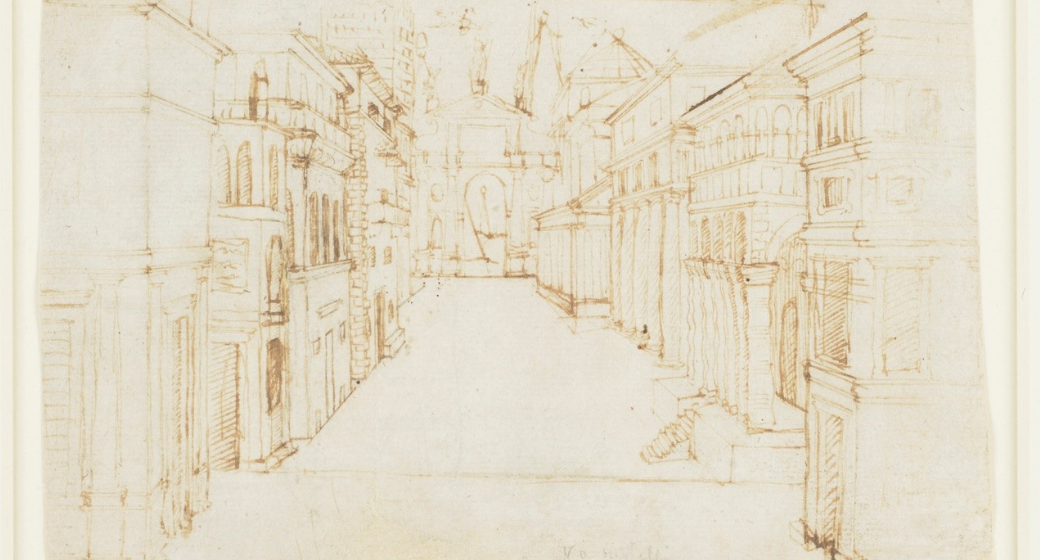
Unknown Artist after Sebastiano Serlio
(Italian, 1475-1554), Study for a Stage Design: Street Lined with Palatial Buildings, after 1545, Pen and, brown ink over black chalk on paper, incised with stylus indentations, 5 3/8 x 8 3/8 in. Museum purchase from the Cornell Anniversary Acquisitions Fund, 2000.08
With the reopening of the museum last week, including the exhibition Drawing Connections: Inside the Minds of Italian Masters, both the Italian Renaissance and the art of drawing are on my mind. Having the chance to inspect up close the drawings on view, especially the several architectural sketches, made me a bit nostalgic, bringing me back to my years of graduate school and the study of Italian late medieval and Renaissance architecture. That led me to choosing this 16th century drawing from our collection as the Work of the Week.
The drawing brings together themes characteristic of the Renaissance. In in urban setting, the palace facades lining the street, as well as the building at the end of it, possibly a church, feature classical architectural details: imposing columns, elegant colonnades and cornices, a composition reminiscent of a Roman triumphal arch. The art and architecture of the Roman empire – from which 15th and 16th century Italians claimed direct lineage – was the ideal to emulate and, if possible, surpass. The composition shows mastery of one-point perspective, another Renaissance “rediscovery,” allowing artists to depict space in a realistic manner. Here, it is put in the service of theater, another art form which benefitted from notable innovation during the period. This drawing shows how to construct a stage design so that space appears more generous: a whole city on a narrow stage, the manipulation of perspective effectively making possible the artifice of theater. The composition draws you in, the palaces on either side inviting you to take an imaginary walk down the street and towards the focal point, the building with the façade reminiscent of a church.
We do not know who drew this delicate ink and chalk drawing. We do know, however, that it is a copy of a woodcut from a book rather famous at the time, the Second Book on Perspective by Italian architect and theorist Sebastiano Serlio (published in 1545). Today, Serlio is remembered as the author of the first architectural treatise in a modern language to be printed with illustrations, also the first to devote an entire section to the theatre. That is where we find the source image for this drawing, titled The Tragic Scene. The drawing may have been a lesson in perspective (apprentices repeatedly copied works by other artists in order to master various skills, types of compositions, or media), or a point of departure for a different composition.
I prefer the drawing to the print because it softens the image, thus making it less specific. It could be a stage design, yet it could also be a street in many an Italian town, its architecture frozen in time, its charm universal. Which brings me back to the notion of nostalgia: in this moment, when taking a trip to Italy is all but impossible, I let art transport me there in spirit.
Ena Heller, Ph.D.
Bruce A. Beal Director
Read more about this work on our Collection page.
This blog post was originally posted in 2020/2021.
